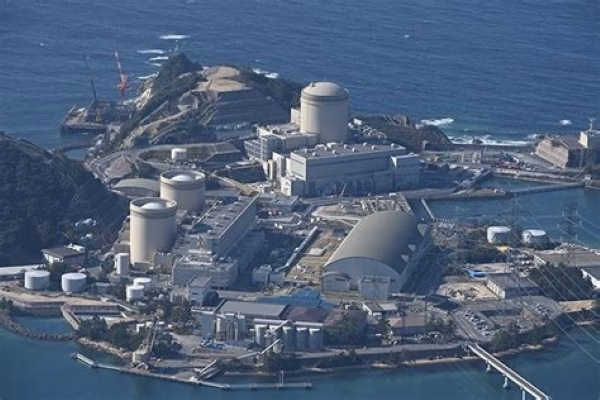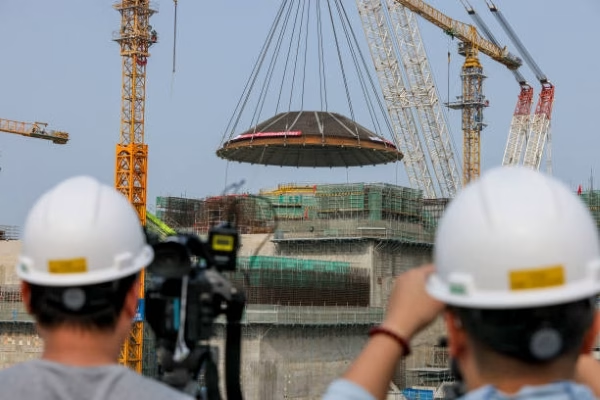Updated November 3, 2025 – Kansai Electric has confirmed it will complete its geological survey study for a potential next-generation nuclear reactor at Mihama by around 2030. The company plans to begin bore-hole drilling and other subsurface assessments in November 2025, with full surveys scheduled to start in April 2027. The survey zones are near the existing number 3 reactor unit. The company also emphasizes that any decision to build will not be made solely on the survey results, but also on business, regulatory and safety factors.

Mihama Plant Leads Japan’s Historic Nuclear Comeback Since 2011 Fukushima Disaster
Reported September 9, 2025 – The 1,666 MW Mihama nuclear power plant in Fukui Prefecture is planning to build a next-generation reactor. Undertaking this is Kansai Electric Power Company. This marks Japan’s first concrete post-Fukushima move towards the construction of a new nuclear reactor.
Kansai intends to resume geological and other site surveys for the proposed nuclear reactor. This comes after the surveys were suspended after the March 2011 earthquake and tsunami, and the Fukushima Daiichi incident. The Fukushima disaster was rated level 7 on the International Nuclear Event Scale – the same as Chernobyl.
Outlook on Japan’s Nuclear Electricity Supply
According to Carbon Brief’s analysis, up to 30% of Japan’s electricity was from nuclear energy prior to the nuclear disaster. The goal was to reach 50% supply by 2030 but all the reactors were shut down after the incident. This was due to public and safety concerns. This led to a surge in the use of fossil fuels that drove up the country’s carbon emissions. Japan’s climate pledges came up to reduce the carbon footprint and champion for decarbonization. The building of a next-generation nuclear reactor at the Mihama nuclear power plant in Fukui Prefecture is testament to the pledge. The country also launched one of its largest biomass power plant, Sendai Port with promise of contributing to a ‘carbon neutral society’.
While details on the next-generation nuclear reactors are still taking shape, the baseline intent is pivoted on safety and resiliency advancements.
Japan is also looking to the West for more energy deals like the Alaska LNG project. The project’s final cost estimate and final investment decision is likely to be reached by the end of the year. This also comes as the U.S gears on its nuclear energy deployment as seen in states like North Dakota where a Canadian firm has been selected to design a nuclear roadmap for the state, and Michigan which is now home to the first nuclear plant in U.S. history to become operational after previous decommissioning. Others following suit include Washington and Tennessee. Iowa is also planning to restart a nuclear plant to power Google’s operations.
Japan’s Changing Nuclear Policy
The Japanese government adopted a new Basic Energy Plan in February 2025. The new Basic Energy Plan exclusively supports the maximum use of nuclear power. It also includes the designing, planning, development and installation of new next-generation reactors. Also underscoring Japan’s shift in nuclear policy is the enhancement of safety in the new design models.

Mihama Nuclear Plant in Fukui and Kansai Electric Operations
Kansai Electric is already operating multiple aging nuclear reactors at Fukui. These include the Mihama-3, Takahama-1 to -4, and the Ohi-3 and -4. According to data compiled by the Japan Atomic Industrial Forum (JAIF), these reactors together with 5 other different groups reached high performance with an average 80.5% capacity factor in FY24.
Also read: UK’s Sizewell C Nuclear Power Plant receives £1.1 billion boost from EDF
The Aging Japan Nuclear Fleet
June 6, 2025 saw the enforcing of new provisions in the GX (Green Transformation) Decarbonization Power Supply Bill that was enacted in May 2023. Under the bill, reactors that have been in operation for more than 30 years are to submit and gain approval for a long-term facility management plan every 10 years. GX is also being pushed for by renewable energy projects like the largest battery storage facility in Japan.
Of the 8 reactor groups – totaling to 14 reactors – 12 are subject to this new requirement. Kansai Electric’s Mihama-3 and Tahama-1 to -3 have already been in operation for more than 40 years. Tahama-3 reached the 40-year operational milestone in January 17,2025 while the Tahama-1 became the first nuclear reactor in Japan to reach the 50-year operational milestone in November 14, 2024. Tahama-2 also passed the 50-year operational milestone in April 1, 2025. According to JAIF, the Nuclear Regulation Authority (NRA) is reviewing submitted plans for the long-term facility management plan.
Legal battles were also in the picture with the move to extend operations for reactors beyond the 50-year milestone. The petition to revoke extension of the aging nuclear reactors was however denied by a Japanese court.
Also read: SKB Selected for US$11 Bn Swedish Nuclear Waste Repository Project
Also read: Kenya-China Nuclear Deal Sets Stage for the Implementation of Kenya’s First Nuclear Power Plant

